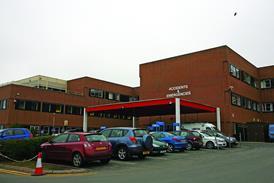New devices trialled by a sexual health consortium over a period of several years have shown how nanotechnology can improve services to combat the rising number of sexually transmitted infections in the UK. Dr Tariq Sadiq explains the potential.
Despite enormous efforts over the past decade or so, we are not seeing the reductions in STIs that we would hope for. In fact, there have been substantial increases in the number of STI diagnoses between 2000 and 2009, with more than 480,000 new cases reported in 2009 alone, an increase of around 12,000 on the previous year.
Some of the rise in diagnoses could be explained by better and more testing, but there are serious concerns that many people, particularly young people, do not visit a health professional and remain undiagnosed and untreated, potentially passing their infections on.
In 2009, we formed the eSTI2 consortium and began work on a proposal to address this problem using new technologies, some our own and some emerging from industry, to make it easier for people to access STI screening and treatment.
Three years later we are now in a position to evaluate some really interesting devices that are a major step forward towards our ultimate aim of developing easy-to-obtain diagnostic chips. Similar to pregnancy tests, these chips would plug directly into mobile phones and computers to give immediate, accurate and private diagnosis for multiple STIs including chlamydia and gonorrhea.
At the same time, this would connect vulnerable populations in the community to care professionals in settings such as clinics and pharmacies, and hopefully help overcome barriers to testing.
These future devices will be predominantly based on nanotechnology – advanced technology on a sub-microscopic scale that allows complex molecular reactions ordinarily performed in the laboratory to occur robotically on a small chip.
The plan is for samples (urine, saliva or a swab) to be placed in the device, and software on the phone, computer or in the e-cloud could then analyse the sample, make a diagnosis and recommend a course of action. Currently, to diagnose a patient with an infection, a sample is usually sent to a laboratory and the results come back in a few days.
Potentially, eSTI2 systems could automatically make an appointment with the appropriate GP surgery or sexual health clinic. They could send a message to the nearest pharmacy then use GPS to direct the user there, where their prescription will already have been prepared. They could also give options for informing a partner.
These kinds of approaches present major social and ethical challenges as well as technological ones, such as confidentiality and data protection, for example. It will also be vital to have tests that can be easily adapted to detect newly identified STIs, as all the causes of sexually transmitted diseases have still not been discovered. So, the project draws on the expertise of researchers with backgrounds in fields as diverse as telecommunications, microengineering, microbiology, and public health, as well as NHS technology adoption teams.
The work is currently funded by a £4m grant from the UK Clinical Research Collaboration. The consortium, led by St George’s, University of London, includes University College London; Brunel University; Warwick University; Queen Mary, University of London; the Health Protection Agency; and industrial partners. This group made up the remaining £1.7m.
While it will still be a number of years before these types of self-test instruments are available on the market, the required technology is close to becoming a reality. We are currently testing and refining near prototypes, but it is vitally important to ensure the devices are accurate in the development stage and then investigate the most effective and safest ways to use eSTI2 systems in the community. We will seek to apply the technology to developing countries, where access to healthcare is more limited.
A further benefit of this technology is that it could speed up the process of communicating infection trends in the population to public health doctors, allowing for quicker responses to outbreaks of an STI.


























No comments yet